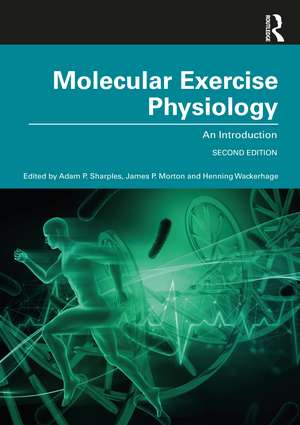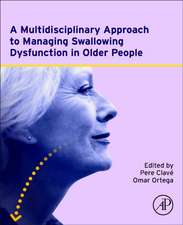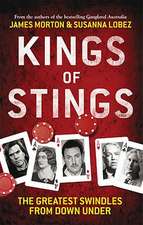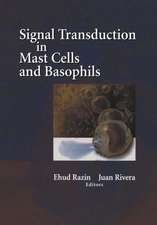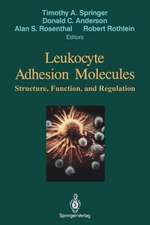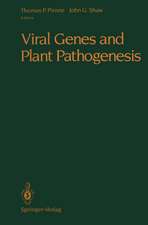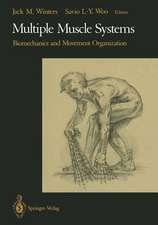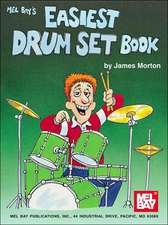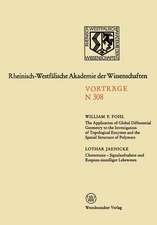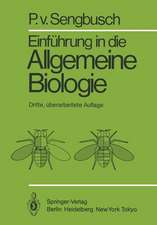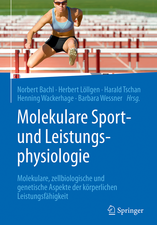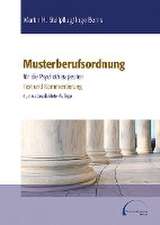Molecular Exercise Physiology: An Introduction
Editat de Adam Sharples, Henning Wackerhage, James Mortonen Limba Engleză Paperback – 12 mai 2022
Structured around key topics in sport and exercise science and featuring contributions from pioneering scientists, such as Nobel Prize winners, this edition includes new chapters based on cutting-edge research in epigenetics and muscle memory, satellite cells, exercise in cancer, at altitude, and in hot and cold climates. Chapters include learning objectives, structured guides to further reading, review questions, overviews of work by key researchers and box discussions from important pioneers in the field, making it a complete resource for any molecular exercise physiology course. The book includes cell and molecular biology laboratory methods for dissertation and research projects in molecular exercise physiology and muscle physiology.
This book is essential reading for upper-level undergraduate or postgraduate courses in cellular and molecular exercise physiology and muscle physiology. It is a valuable resource for any student with an advanced interest in exercise physiology in both sport performance and clinical settings.
| Toate formatele și edițiile | Preț | Express |
|---|---|---|
| Paperback (1) | 420.49 lei 6-8 săpt. | +43.46 lei 4-10 zile |
| Taylor & Francis – 12 mai 2022 | 420.49 lei 6-8 săpt. | +43.46 lei 4-10 zile |
| Hardback (1) | 1011.33 lei 6-8 săpt. | |
| Taylor & Francis – 12 mai 2022 | 1011.33 lei 6-8 săpt. |
Preț: 420.49 lei
Preț vechi: 457.05 lei
-8% Nou
Puncte Express: 631
Preț estimativ în valută:
80.47€ • 83.70$ • 66.43£
80.47€ • 83.70$ • 66.43£
Carte tipărită la comandă
Livrare economică 14-28 aprilie
Livrare express 07-13 martie pentru 53.45 lei
Preluare comenzi: 021 569.72.76
Specificații
ISBN-13: 9781138086883
ISBN-10: 1138086886
Pagini: 358
Ilustrații: 14 Tables, black and white; 80 Line drawings, black and white; 17 Halftones, black and white; 97 Illustrations, black and white
Dimensiuni: 174 x 246 x 22 mm
Greutate: 0.69 kg
Ediția:2. Auflage
Editura: Taylor & Francis
Colecția Routledge
Locul publicării:Oxford, United Kingdom
ISBN-10: 1138086886
Pagini: 358
Ilustrații: 14 Tables, black and white; 80 Line drawings, black and white; 17 Halftones, black and white; 97 Illustrations, black and white
Dimensiuni: 174 x 246 x 22 mm
Greutate: 0.69 kg
Ediția:2. Auflage
Editura: Taylor & Francis
Colecția Routledge
Locul publicării:Oxford, United Kingdom
Public țintă
Postgraduate and UndergraduateCuprins
1. Introduction to molecular exercise physiology
2. Methods in molecular exercise physiology
3. Genetics and exercise: an introduction
4. Genetics of muscle mass and strength
5. Genetics of endurance
6. Epigenetics of exercise
7. Signal transduction and exercise
8. Molecular adaptation to resistance exercise
9. Molecular adaptations to endurance exercise and skeletal muscle fibre plasticity
10. Molecular sport nutrition
11. Altitude, temperature, circadiun rhythms and exercise
12. Cancer and exercise
13. Satellite cells and exercise
2. Methods in molecular exercise physiology
3. Genetics and exercise: an introduction
4. Genetics of muscle mass and strength
5. Genetics of endurance
6. Epigenetics of exercise
7. Signal transduction and exercise
8. Molecular adaptation to resistance exercise
9. Molecular adaptations to endurance exercise and skeletal muscle fibre plasticity
10. Molecular sport nutrition
11. Altitude, temperature, circadiun rhythms and exercise
12. Cancer and exercise
13. Satellite cells and exercise
Notă biografică
Adam P. Sharples, PhD, is a Professor of Molecular Physiology and Epigenetics at the Norwegian School of Sport Sciences (NiH), Olso, Norway; an institute ranked 2nd (out of 300+) in the world for sport and exercise sciences. He investigates the underlying cellular, molecular and epigenetic mechanisms of muscle growth (hypertrophy) and wasting (atrophy) using both cell modelling and whole-body approaches. His work first demonstrated that human muscle possesses an "epigenetic memory" of exercise. He used to play professional Rugby League in the UK.
James P. Morton, PhD, is a Professor of Exercise Metabolism at Liverpool John Moores University (LJMU). His research evaluates the impact of nutrient availability on muscle metabolism during exercise and the molecular regulation of skeletal muscle adaptations to exercise training. James has also worked in a number of performance related roles across both high-performance sport and industry, working with some of the world’s most high profile athletes, sports teams and institutions.
Henning Wackerhage, PhD, is a Professor and Molecular Exercise Physiologist. He is specifically interested in the molecular mechanisms by which exercise improves our fitness and health, particularly the role of the so-called Hippo proteins in skeletal muscle and the association between the proteome, metabolome, athletic performance, disease and ageing.
James P. Morton, PhD, is a Professor of Exercise Metabolism at Liverpool John Moores University (LJMU). His research evaluates the impact of nutrient availability on muscle metabolism during exercise and the molecular regulation of skeletal muscle adaptations to exercise training. James has also worked in a number of performance related roles across both high-performance sport and industry, working with some of the world’s most high profile athletes, sports teams and institutions.
Henning Wackerhage, PhD, is a Professor and Molecular Exercise Physiologist. He is specifically interested in the molecular mechanisms by which exercise improves our fitness and health, particularly the role of the so-called Hippo proteins in skeletal muscle and the association between the proteome, metabolome, athletic performance, disease and ageing.
Descriere
The new edition offers a student-friendly introduction to a history documenting the emergence of molecular biology techniques, methodology, genetics and epigenetics, and the molecular mechanisms that lead to adaptation after exercise, and explicitly links to outcomes in performance, nutrition, physical activity, and clinical exercise.
